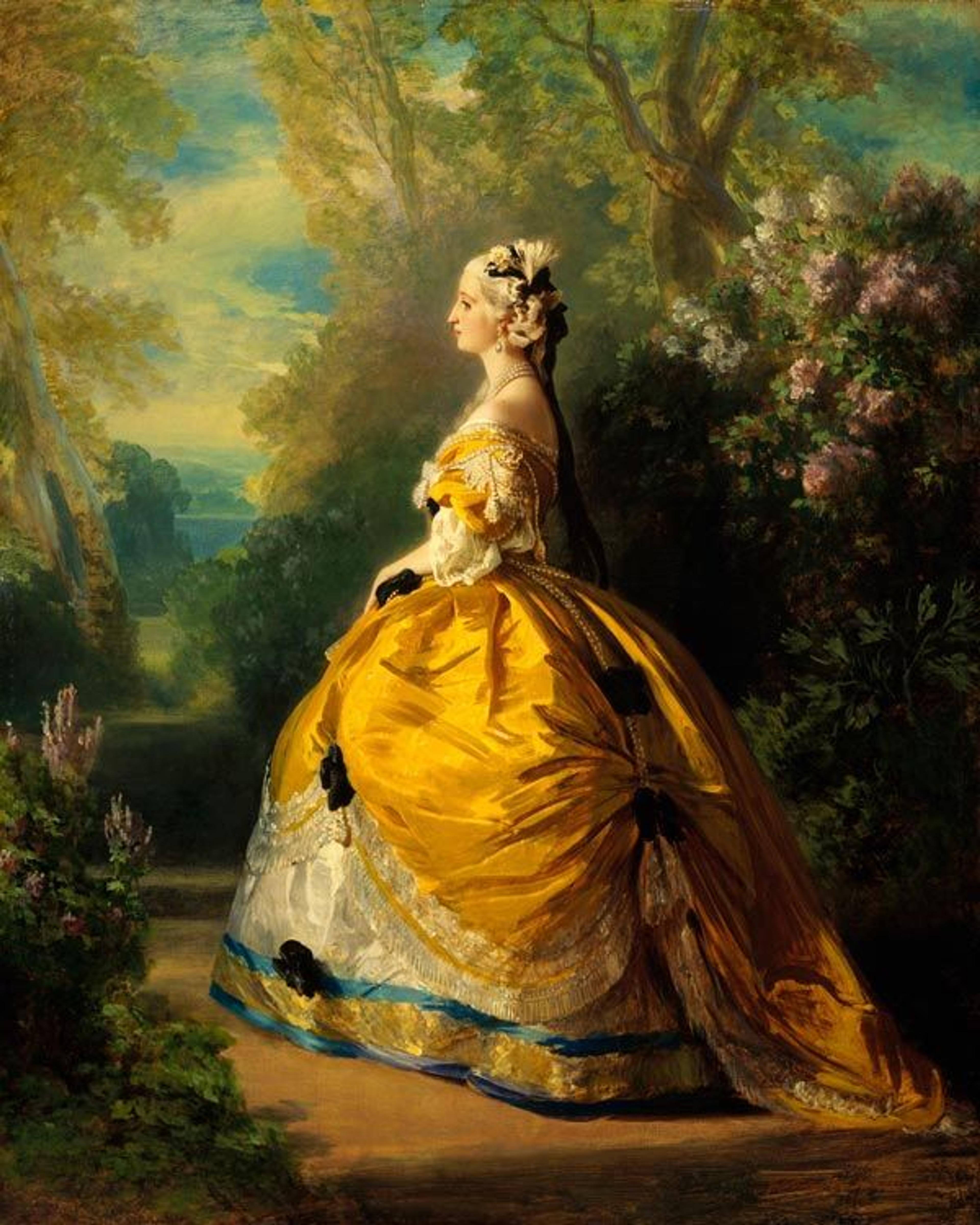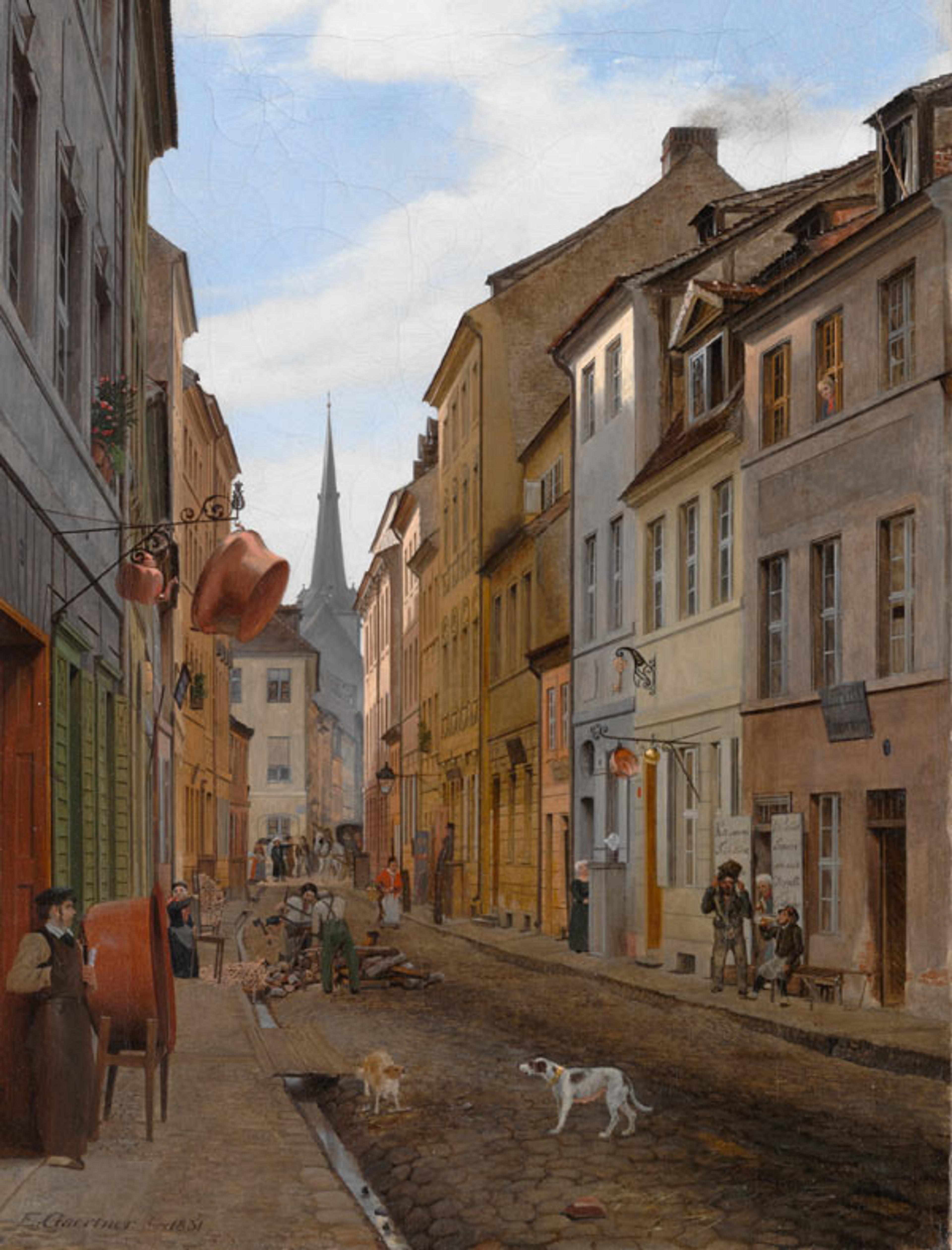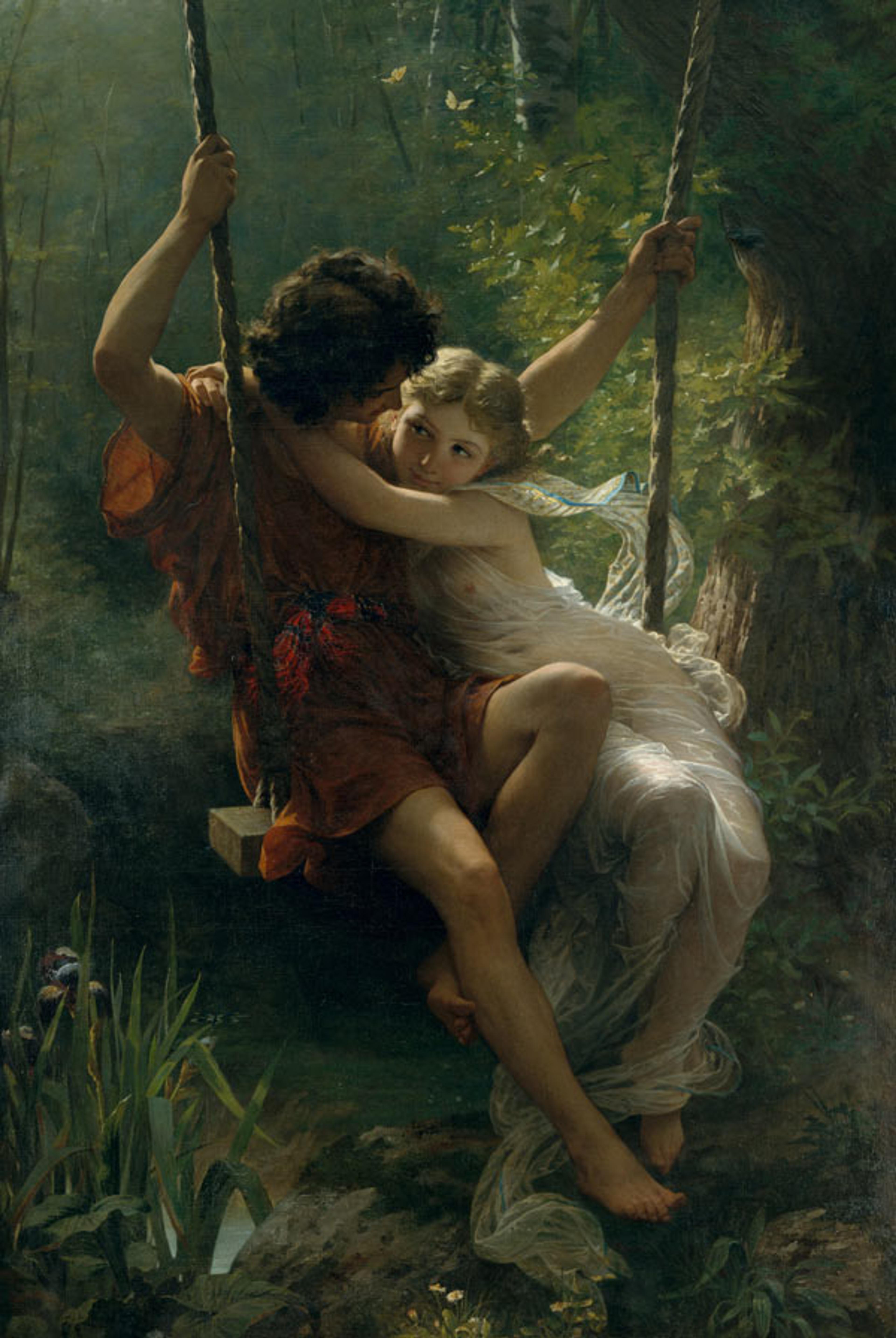Enchanted by Antiques

Franz Xaver Winterhalter (German, 1805–1873). The Empress Eugénie (Eugénie de Montijo, 1826–1920, Condesa de Teba), 1854. Oil on canvas; 36 1/2 x 29 in. (92.7 x 73.7 cm). The Metropolitan Museum of Art, New York, Purchase, Mr. and Mrs. Claus von Bülow Gift, 1978 (1978.403)
«In celebration of the 2015 Scholastic Art & Writing Awards exhibition, now on view in the Ruth and Harold D. Uris Center for Education, the Teen Blog will feature guest posts by Scholastic Gold Key Award writers from New York City through the close of the exhibition on May 17. This week's blogger, Anika, was awarded a Gold Key for her poem, "Tale of a River Stone."»
To say that the Met is an aesthetically pleasing location would be an understatement. It's outstandingly gorgeous, and as a New Yorker, it has taken me a while to truly appreciate this. Every day, I pass by the Main Building on my way to school without batting an eye. Yet when I find myself tiptoeing up the endless staircase leading into the cavernous interior and walking amongst centuries of art, it hits me: this place is massive, and it stands as an epicenter of culture and creative prestige.
Maybe it has something to do with my love for all things antique, but I have always been enchanted by the nineteenth- and early twentieth-century paintings in the Department of European Paintings. The beautifully painted ball gowns are full of rich colors and creamy creases, and I enjoy imagining myself walking down the charming cobblestone streets filled with dogs, townspeople, and perfectly puffed clouds.

Eduard Gaertner (German, 1801–1877). Parochialstrasse in Berlin (detail), 1831. Oil on canvas; 16 x 11 in. (40.6 x 27.9 cm). The Metropolitan Museum of Art, New York, Catharine Lorillard Wolfe Collection, Wolfe Fund, and funds from various donors, by exchange, 2006 (2006.258)
I was thoroughly pleased to see Pierre-Auguste Cot's Springtime during my recent visit to the Museum. It's now May, and New York City is officially in the spring swing of things. The bright shades of green, streaming sunlight, and happy young lovers in this painting make it feel like Central Park—sprawling just outside, separated only by the Museum's walls—has bloomed right into the Museum. European paintings remind me of fairy tales because they are full of people who look as soft as their dresses and landscapes so large that their grandness can make you smile.

Pierre-Auguste Cot (French, 1837–1883). Springtime (detail), 1873. Oil on canvas; 84 x 50 in. (213.4 x 127 cm). The Metropolitan Museum of Art, New York, Gift of Steven and Alexandra Cohen, 2012 (2012.575)
I don't know why I like these galleries so much, but it's funny because my mother most definitely prefers artworks that are from the most recent century, and I drag her into these galleries every time we visit the Museum. As a millennial, the Internet has exposed me to various types of art; everything from ancient sculpture to graphic design is available on my laptop. Maybe I am attracted to these old paintings because they are traditional—I love that the colors are luxurious and that the lighting plays a role in setting the mood.
It's odd to think that someone my age can feel so passionate about old paintings, but I do, and every Museum visit involves me creaking along the expanses of polished hardwood floors, smiling as, one by one, they begin to whisk me away into a wonderful world of colorful stories. I highly recommend that everyone visit the Museum.
For more teen writing, please visit the exhibition in the Uris Center for Education!
Anika undefined
Anika is a guest blogger for the teen blog. Her work is currently on view in the Scholastic Art & Writing Awards exhibition (March 16–May 17, 2015).